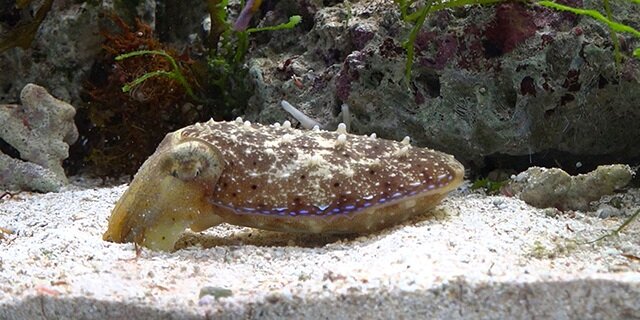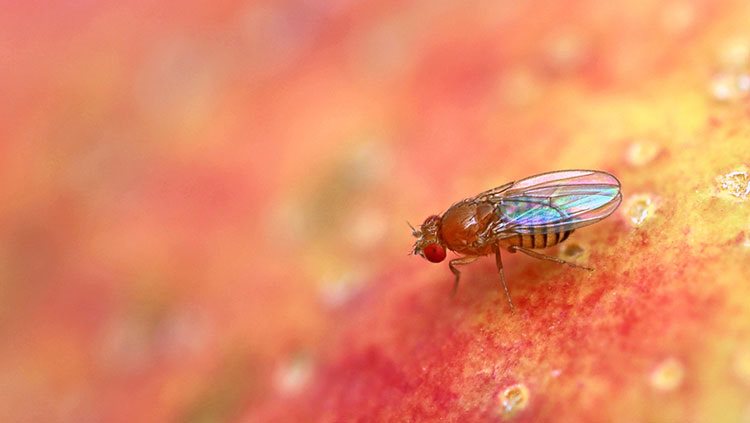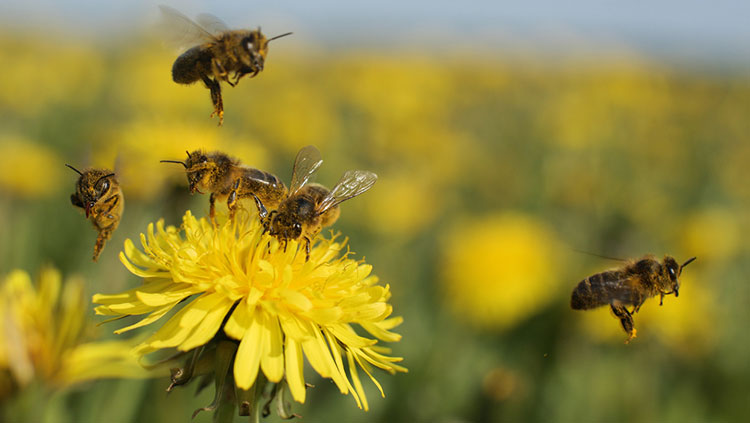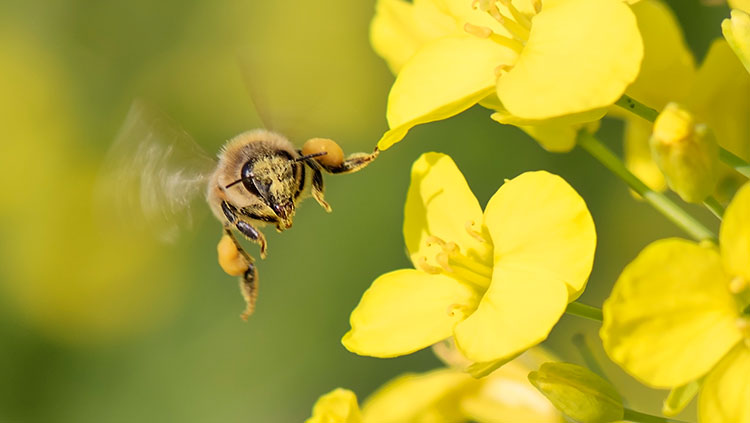Antidotes from Ant Venom
- Published25 Oct 2023
- Author Ravindra Palavalli Nettimi
- Source BrainFacts/SfN
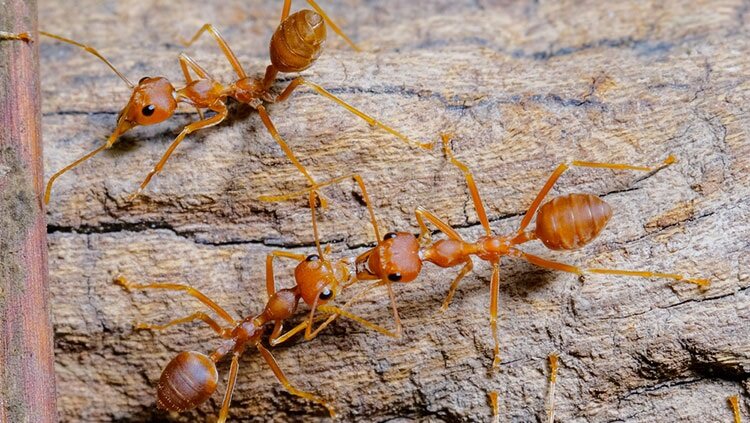
In June 2023, a Georgia woman died after stepping on a fire ant nest. Deaths due to ant stings are rare; roughly 1% of people are hyperallergic to ant venom. Still, ant stings can be agonizing. Justin Schmidt, an entomologist who created the insect sting pain index, ranked the fire ant sting at a pain level of one. The Amazonian bullet ant sting received the highest pain level of four. It is like “walking over flaming charcoal with a three-inch nail embedded in your heel,” Schmidt wrote in his book “The Sting of the Wild.”
From ouch to hospitalization, reactions to ant stings vary. But there is more to their venom than you feel. Scientists are uncovering how ant venom affects their victims, revealing unlikely insights that inspire antimicrobials, novel drugs, and a better understanding of pain.
A Concoction of Wide Varieties
Ant venom is a cocktail of chemicals. It includes formic acid, proteins (long chains of amino acids), peptides (smaller versions of proteins), alkaloids (organic compounds with nitrogen atoms), and allergens (which cause allergies).
Each component arises as adaptations over millions of years can provide ants with survival advantages. As ants evolved, various components contributed to their defenses against invaders and predators, their ability to hunt and subdue prey, and their chemical communication techniques such as alerting nestmates. Depending on the ant’s environment, the venom composition can vary from one to over 100 ingredients.
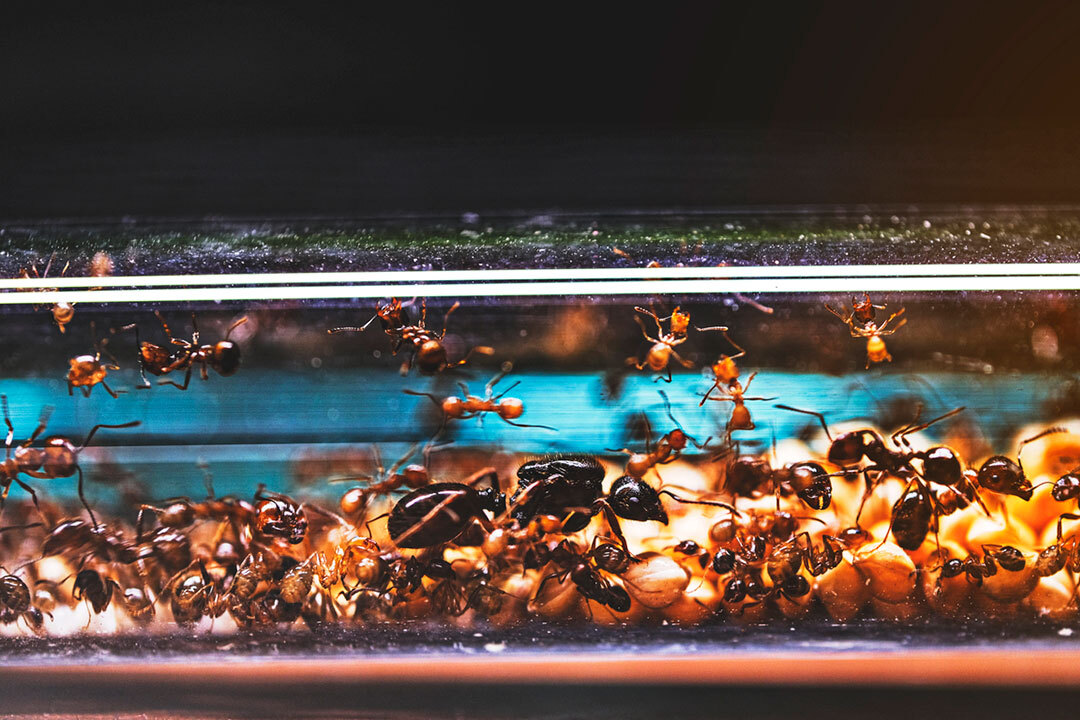
“There are over 14,000 [known] ant species in the world,” says Axel Touchard, a postdoctoral researcher at Cornell University. “The diversity of toxins is so amazing that I can continue to work on different ant venoms all my career.”
Venom from each species offers a different insight. That’s why Samuel Robinson, a molecular biologist at the University of Queensland, wants to identify the most unique components.
Ouch! A Neurotoxin
A single toxic component called poneratoxin is responsible for the bullet ant’s potent sting. This peptide acts on neurons and can cause excruciating pain. Robinson and his team grew sensory neurons from mice and added poneratoxin to find out how it affects them.
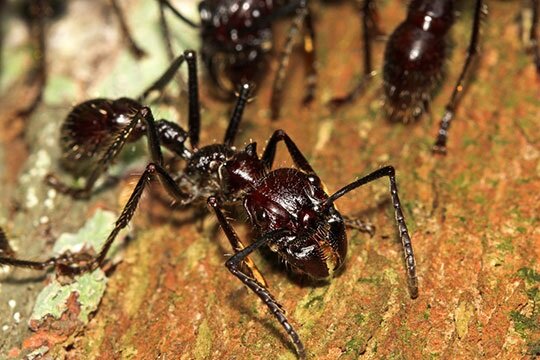
They discovered poneratoxin targets proteins called sodium ion channels, gated pores that allow sodium ions to flow into a neuron and fire it off. When poneratoxin binds to the gated pores on pain-perceiving neurons, it opens them, but prevents them from closing for an extended period, issuing a span of uncontrolled, prolonged pain signalling. Hence, the agony that feels like a bullet shot through the stung area.
“It’s a unique type of pain,” says Robinson. “If we can better understand sodium channels, we have a better chance of developing drugs targeting them,” which could lead to a “new class of painkillers.” Robinson’s group is currently working toward understanding how pain travels through the body and how to develop drugs to block the pain.
Ant Venom to Potential Products
Two U.S. patents, awarded in 1981 and 1993, asserted ant venom components can reduce pain in patients with rheumatoid arthritis. And in 1984, results from a study indicated ant venom could treat arthritis. But those venom components have yet to be successfully commercialized into a drug. Robinson says, “It shouldn’t be ruled out, but their efficacy hasn’t been proven.” Right now, no ant-venom-inspired commercial drug is on the market.
However, ant venom also holds promise for developing new antimicrobials and insecticides. Fire ant venom, which consists mainly of alkaloids called solenopsin, exhibits antimicrobial properties. Fire ants use them to protect themselves from microbes brought into their nest. They disinfect their nest by vigorously rubbing venom against nest surfaces, likely killing bacterial cells by creating pores and penetrating them. They even feed each other their venom, suggesting its use as an antimicrobial agent. An evolutionarily guided search strategy could help scientists identify these fast-acting and target-selective antimicrobials, which may also help combat issues like antimicrobial resistance.
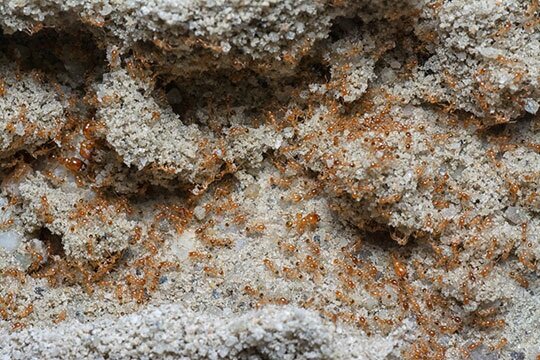
Ant venom may also inspire new discoveries in peptide drug development. For example, researchers could isolate an inflammation-triggering ant venom peptide and re-engineer it into a drug to act as an anti-inflammatory agent by slightly changing the amino acid composition of the peptide. Other peptides from ant venom can paralyze or kill insects, which may spur a new generation of selective insecticides. To “develop new and effective bio-insecticides,” researchers like Touchard want to understand which molecules in ant venom act upon their insect prey.
In the end, the tiny ants scurrying past your picnic basket could hold a vast pharma toolbox for discovering novel drugs, insecticides, and more.
CONTENT PROVIDED BY
BrainFacts/SfN
References
Altman, R. D., Schultz, D. R., Collins-Yudiskas, B., Aldrich, J., Arnold, P. I., & Brown, H. E. (1984). The effects of a partially purified fraction of an ant venom in rheumatoid arthritis. Arthritis and rheumatism, 27(3), 277–284. https://doi.org/10.1002/art.1780270305
Ascoët, S., Touchard, A., Téné, N., Lefranc, B., Leprince, J., Paquet, F., Jouvensal, L., Barassé, V., Treilhou, M., Billet, A., & Bonnafé, E. (2023). The mechanism underlying toxicity of a venom peptide against insects reveals how ants are master at disrupting membranes. IScience, 26(3), 106157. https://doi.org/10.1016/j.isci.2023.106157
Bonnefoy, X., Kampen, H., Sweeney, K. (2008). Public health significance of urban pests. World Health Organization. Regional Office for Europe. https://iris.who.int/handle/10665/107363
Chen, J., & Du, Y. (2022). Fire ants feed their nestmates with their own venom. Journal of Insect Physiology, 142, 104437. https://doi.org/10.1016/j.jinsphys.2022.104437
dos Santos Pinto, J. R. A., Fox, E. G. P., Saidemberg, D. M., Santos, L. D., da Silva Menegasso, A. R., Costa-Manso, E., Machado, E. A., Bueno, O. C., & Palma, M. S. (2012). Proteomic view of the venom from the fire ant Solenopsis invicta Buren. Journal of Proteome Research, 11(9), 4643–4653. https://doi.org/10.1021/pr300451g
Duraisamy, K., Singh, K., Kumar, M., Lefranc, B., Bonnafé, E., Treilhou, M., Leprince, J., & Chow, B. K. C. (2022). P17 induces chemotaxis and differentiation of monocytes via MRGPRX2-mediated mast cell–line activation. Journal of Allergy and Clinical Immunology, 149(1), 275–291. https://doi.org/10.1016/j.jaci.2021.04.040
Holzmann G. (1981). Therapeutic agent (U.S. Patent No. 4247540). U.S. Patent and Trademark Office. https://patents.google.com/patent/US4247540A/en
Murray S. B. (1992). Ant venoms: chemical and pharmacological properties, Journal of Toxicology: Toxin Reviews, 11(2), 115-164. https://doi.org/10.3109/15569549209033107
Robinson, S. D., Deuis, J. R., Touchard, A., Keramidas, A., Mueller, A., Schroeder, C. I., Barassé, V., Walker, A. A., Brinkwirth, N., Jami, S., Bonnafé, E., Treilhou, M., Undheim, E. A. B., Schmidt, J. O., King, G. F., & Vetter, I. (2023). Ant venoms contain vertebrate-selective pain-causing sodium channel toxins. Nature Communications, 14(1), 2977. https://doi.org/10.1038/s41467-023-38839-1
Schmidt, J (2016). The Sting of the Wild. Baltimore, Maryland: Johns Hopkins University Press. ISBN 978-1-4214-1929-9.
Timothy B. (2023, June 28) Woman dies after stepping on fire ants at her Georgia home. The Washington Post. https://www.washingtonpost.com/nation/2023/06/28/fire-ants-death-georgia-woman-weed/
Touchard, A., Aili, S., Fox, E., Escoubas, P., Orivel, J., Nicholson, G., & Dejean, A. (2016). The biochemical toxin arsenal from ant venoms. Toxins, 8(1), 30. https://doi.org/10.3390/toxins8010030
Touchard, A., Brust, A., Cardoso, F. C., Chin, Y. K.-Y., Herzig, V., Jin, A.-H., Dejean, A., Alewood, P. F., King, G. F., Orivel, J., & Escoubas, P. (2016). Isolation and characterization of a structurally unique β-hairpin venom peptide from the predatory ant Anochetus emarginatus. Biochimica et Biophysica Acta (BBA) - General Subjects, 1860(11), 2553–2562. https://doi.org/10.1016/j.bbagen.2016.07.027
Watanabe K., Tuchida T., & Schultz, D.R. (1993). Anti-inflammatory and analgesic compounds, related compositions and methods for preparation and use thereof. U.S. Patent No. 5180743). U.S. Patent and Trademark Office. https://patents.google.com/patent/US5180743A/en
Yacoub, T., Rima, M., Karam, M., Sabatier, J.-M., & Fajloun, Z. (2020). Antimicrobials from venomous animals: an overview. Molecules, 25(10), 2402. https://doi.org/10.3390/molecules25102402
Also In Animals in Research
Trending
Popular articles on BrainFacts.org




